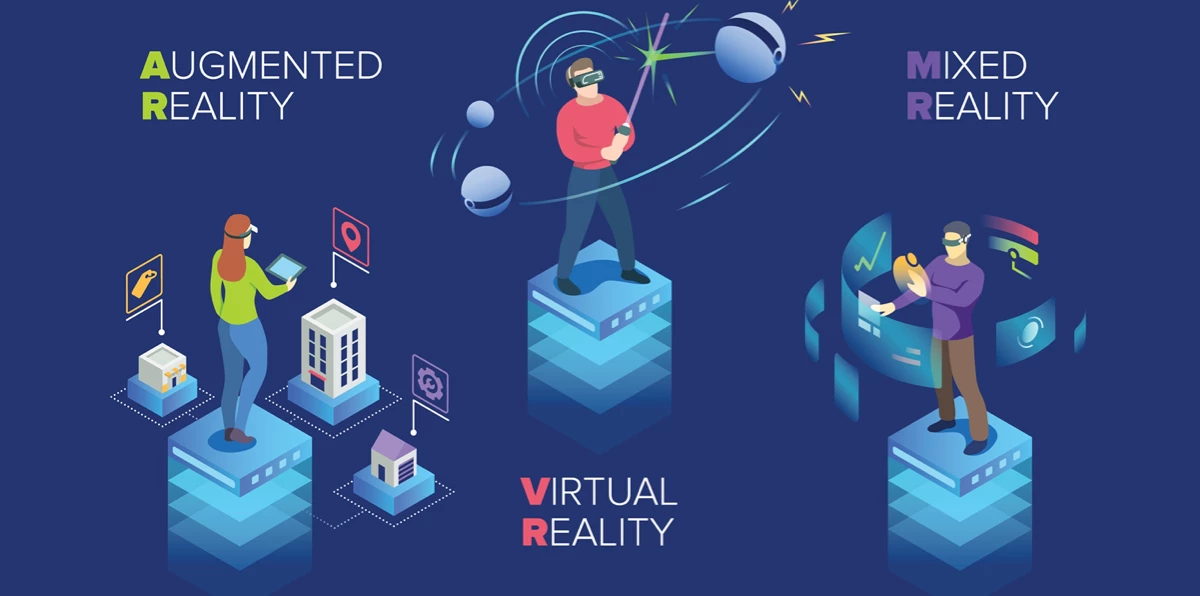14 Mar Augmented Reality and Virtual Reality in the field of Healthcare

• Augmented Reality (AR) and Virtual Reality (VR) are new technologies that are transforming the way we see the world.
• In Augmented Reality the user does not lose contact with the real world, while in Virtual Reality the user enters an immersive experience.
• In many cases AR and VR go hand in hand in many applications such as medical education and surgical assistance.
• GENESIS Biomed has collaborated in numerous projects involving these technologies.
The irruption of new technologies in all fields, particularly in the field of healthcare, has been one of the great revolutions of the 21st century. The integration of digital and technological advances in this field has become visible through robotics, AI (Artificial Intelligence), VR (Virtual Reality), AR (Augmented Reality), nanotechnology, etc.
In this article we are going to focus on Augmented Reality and Virtual Reality to see the differences and the impact that these technologies are having in the world of Health.
AUGMENTED REALITY enhances the real-world environment to some extent. It gives an image of the real world, projecting digital information onto the existing environment. It uses devices such as smartphones, tablets or smart glasses to superimpose images, videos or computer-generated graphics onto the real-world view. These digital elements can be interactive and integrate with the user’s physical environment, but the user does not lose contact with the real world.
Examples of augmented reality could be:
- To help in emergency situations: an application that shows the location of automated external defibrillators or AEDs in your immediate environment.
- To help medical professionals improve blood collection: a portable scanner projects an image of the location of veins on the patient’s body onto the skin so that nurses and doctors can perform the collection.
- To aid surgery: computer programmes that provide surgeons with “X-ray vision” by fusing digitally enhanced images directly overlaid on the surgeon’s field of vision to aid intervention.
VIRTUAL REALITY, on the other hand, is a fully immersive process with glasses that cover the eyes completely and may have motion controllers. It isolates you from the outside world and offers an immersive experience. In contrast to AR, VR offers a fully immersive experience, where the user can feel that they are present in another place interacting with virtual objects and people, losing contact with reality.
Examples of applications include:
- For Mental Health: creating immersive environments to support exposure therapy, relaxation, concentration and stress reduction. It is used to treat phobias, post-traumatic stress disorder (PTSD), anxiety disorders, autism spectrum disorders, etc.
- For Alzheimer’s treatment as reminiscence therapy: in this case, people with dementia are virtually transported to places of personal importance and memorable experiences in order to trigger memories.
- For rehabilitation: virtual reality can help patients regain mobility and muscle function through interactive games and exercises.
Augmented reality and virtual reality often go hand in hand in many applications, constituting what is known as MIXED REALITY or HYBRID REALITY. The combination of the two technologies is making strong inroads in medical education and surgical planning and care. VR and AR offer a solution that allows students and professionals to experience medical scenarios in an immersive and realistic way, facilitating effective knowledge acquisition and skills practice. They are especially useful for the planning of complex surgeries, where virtual models allow practice before the actual surgery. The generation of virtual twins, or digital twins, which simulate, for example, the tumour to be operated on and its environment, and the subsequent 3D printing of these models, allows the surgeon to recreate the situation he or she will face when carrying out the surgery. This greater knowledge will allow him to have a more controlled situation when carrying out the intervention.
At GENESIS Biomed, a consulting firm in the Biomedicine sector, we are witnesses to the rise of these technologies. In recent times we have seen a significant increase in these technologies in projects in which we have collaborated such as: Biel Glasses (smart glasses that adapt reality to the remaining visual capacity of people with low vision); Eyegress (virtual cognitive rehabilitation platform, which promotes the recovery of patients who have suffered neurological damage); Anais Medical (specialising in the design and manufacture of highly realistic simulation models for medical students, residents and nurses); BIOREM (developer of 3D printing with bioprinting materials), and various projects for Xartec. Xartec is a network in Catalonia, led by CREB UPC, made up of research groups belonging to 23 different institutions to catalyse R&D in the field of HealthTech. GENESIS Biomed has also collaborated with this network in several projects related to AR and VR aimed at surgical training/planning in different interventions or medical procedures.
In conclusion, both Augmented Reality and Virtual Reality are transforming the way we interact with technology and the world around us. As these technologies continue to advance, we are likely to see even greater growth in adoption and promising applications in a variety of fields.


